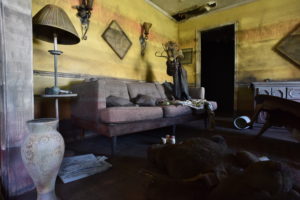Ten years ago, Hurricane Sandy’s storm surge flooded twenty-four US states, particularly New York and New Jersey.
Prior to landfall, the Associated Press reported that experts predicted a billion dollars in damage in the US. It turned out to be $43 billion (1).
Now, near the 10th anniversary of what is unofficially known as Superstorm Sandy, NBC Channel 4 TV in New York City devoted a 5-minute segment to address this question: “Why shouldn’t we be all protected?” (2)
This question is posed while observing that after Hurricane Katrina in 2005, the US Army Corps of Engineers built a new system––including a massive regional surge barrier––in under eight years in Louisiana.
But for New York, and for New Jersey, the Corps is still debating the best approach to battle storm surge, ten years out.
Without a full handle on the facts, this is a reasonable question.
In our view, there are two major reasons for the starkly contrasting responses from the Corps to the two hurricanes where the associated storm surges precipitated highly unanticipated results:
1. The original levee system in New Orleans failed due to design and construction mistakes on the part of the US Army Corps of Engineers.(3)
2. There was less uncertainty on how to best protect the greater New Orleans region. The primary errors were identified as allowing storm surge to enter the heart of the city via large drainage canals, and also via the Inner Harbor Navigation Canal. The new system has floodgates gates at the mouths of those canals and a surge barrier east of the city.
In the case of Sandy, the Corps is not faced with the debris of its own mistakes. And according to the Corps, there are “geographical and urban/rural differences” between the two regions.
In the north, the Corps has proposed a network of smaller sea barriers rather than the locally preferred plan to build one massive harbor wall from Breezy Point, NY to Sandy Hook, NJ.
For the survivors of Sandy, like shop owner and vintner Marco Pasanella who lost 10,000 bottles of wine which were swept out to sea, the disaster feels like it was yesterday. (4)
Our hearts go out to everyone affected. And we will be closely watching the progress in New York and New Jersey.
Sandy Rosenthal, founder of Levees.org
H.J. Bosworth Jr,. P.E. lead researcher Levees.org 1421 Soniat Street, New Orleans, LA 70115 504-722-8172
1. Seth Borenstein. “East Coast readies For Frankenstorm monster” Associated Press. Oct 26, 2012. LINK.
2. Chris Glorioso, “Post Katrina New Orleans Built Surge Barrier in 9 Years. Decade After Sandy, NY Still Waits”, NBC Channel 4 New York, October 25, 2022. LINK.
3. Campbell Robertson and John Schwartz, “Decade After Katrina, Pointing Finger More Firmly at Army Corps,” New York Times, May 23, 2010. LINK
4. Marco Pasanella, “I’m No Longer Sure New York Will Protect Itself From Rising Waters”, New York Times, Oct 28, 2022. LINK






Am not seeing a ‘Reference’ listed for FootNote #4 mentioned in the article….
Hopefully New York and New Jersey can ‘grab the bull by the horns’ and ‘git er done’ themselves internally rather than going through the New Orleans style grief of working with the Federal Government …..
Thank you for pointing out that reference #4 is missing! We’ve add the reference and also a link to the NYT story.
Thank you so much for all you do!!! This was such an amazing read; I’m looking forward to more!